Every spring, vegetable gardens promise abundance, yet weeds arrive before harvests begin. Hours of bending, pulling, and hoeing push many gardeners toward shortcuts.
One of the most common solutions is landscape fabric. The product claims to reduce weeding time, conserve moisture, and keep garden rows looking neat. This leads many to ask: can i use weed control fabric in vegetable garden beds without harming long-term growth?
The answer is layered. Fabric can be effective for a season, but its long-term impact on soil biology and crop health is debated. Researchers warn that fabrics clog with silt and organic matter, reducing air and water movement. Over time, they may starve the soil of organic inputs and disrupt earthworms and microbes that sustain fertility.
The scale of the issue is significant. Studies show mulching can reduce weeding time by two-thirds and lower summer soil temperatures by 8–13°F, offering real relief for growers source. But not all mulching systems are created equal, and fabric’s role is controversial.
Understanding the real effects of weed control fabric, its advantages, and its downsides helps gardeners make choices that save time today without sacrificing tomorrow’s harvests.
What Weed Control Fabric Really Is
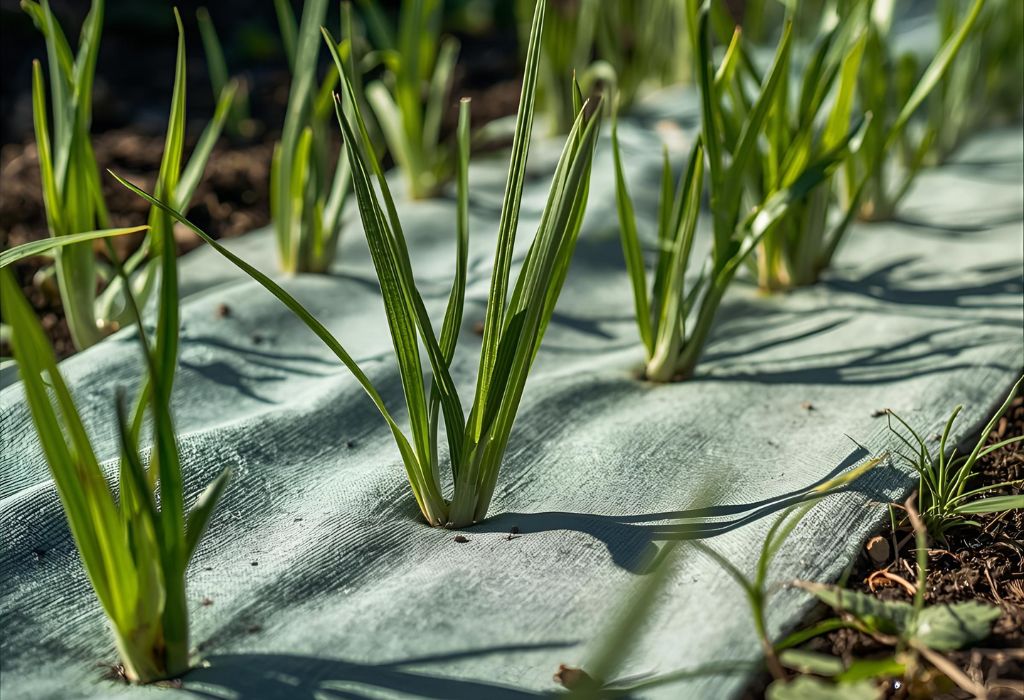
Weed control fabric, also called landscape fabric, is a woven or nonwoven geotextile. It is typically made of polypropylene or polyester fibers designed to block light while allowing limited water and air movement.
When installed tightly across the soil, the fabric prevents weed seeds from accessing the light they need to germinate. The theory is simple: no sunlight, no weeds.
In the short term, the fabric performs as promised. Beds covered with it show fewer weeds during the early growing season. Roots of vegetable plants grow through slits or burned holes cut into the fabric, keeping rows tidy.
Over time, however, the story changes. Dust, silt, and organic debris fill the tiny pores of the material. Once clogged, the permeability drops and the soil beneath receives less oxygen and moisture.
This gradual decline in function creates challenges. Instead of acting as a breathable barrier, the fabric becomes nearly impermeable, creating conditions that weaken soil health.
Can I Use Weed Control Fabric in Vegetable Garden Beds?
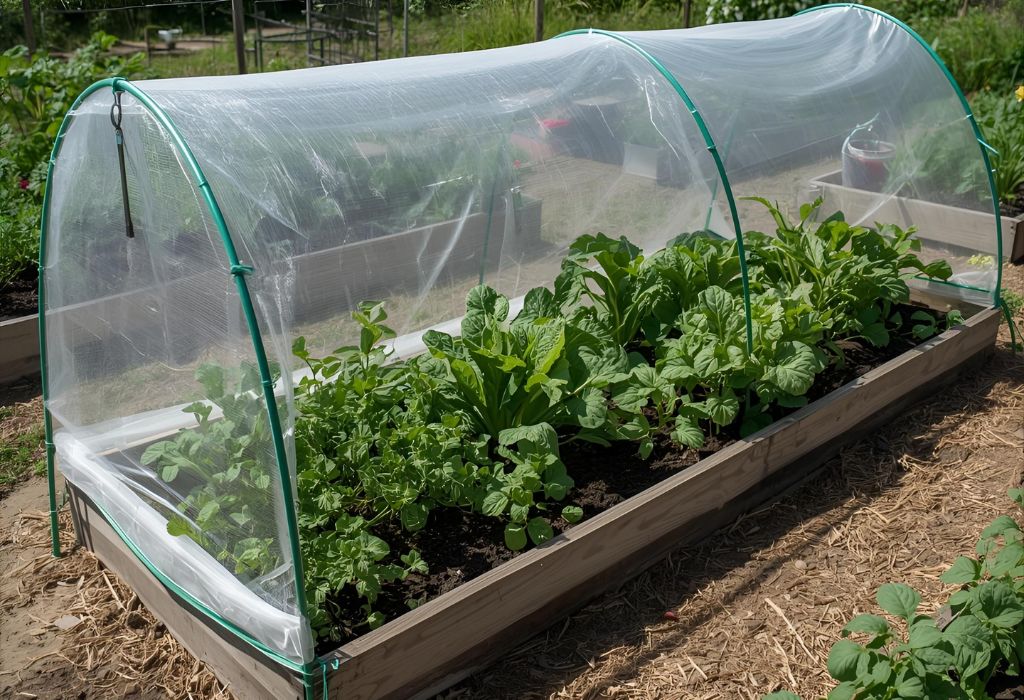
The temptation to use fabric in vegetable beds is strong. At first, it appears to solve one of the hardest problems: constant weeding.
In the first year, fabric may indeed suppress weeds, keeping rows manageable and reducing labor. Crops like peppers, squash, and tomatoes benefit from cleaner fruit and less competition during establishment.
But university extension studies caution against relying on fabric for permanent beds. Soil life depends on organic matter cycling, root turnover, and natural aeration. A barrier placed over the surface limits these processes and can leave the soil less fertile in the long run.
Another drawback is the persistence of weeds at the edges and on top of the fabric. Seeds blown in by wind or carried by birds germinate in the thin soil or mulch above the fabric. Their roots often entangle in the fibers, making removal tedious and damaging.
In short-term use, fabric may save time. In long-term vegetable beds, however, it often creates more problems than it solves.
Pros and Cons Specific to Vegetables
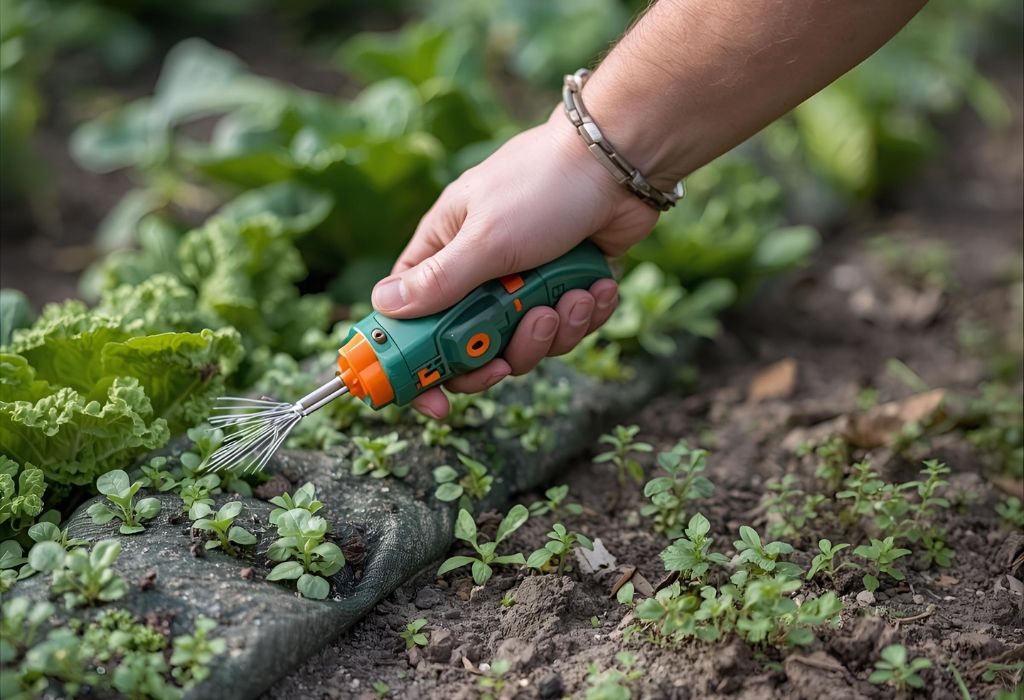
The main benefits of using weed control fabric in vegetable gardens include rapid bed preparation, less early-season weeding, and potential reuse for multiple crops. For market growers, fabric strips can standardize spacing and reduce herbicide use.
Yet the disadvantages weigh heavily in permanent systems. Soil pores clog, reducing water infiltration. Organic matter from mulches and plant residues struggles to reach the soil, starving microbes and earthworms.
Vegetable roots can suffer as well. When planted through small slits, stems expand and rub against the fabric, leading to girdling or constriction. Soil temperatures can also rise beneath black fabric, stressing cool-season crops.
Perhaps most concerning is the difficulty of removal. At the end of a season, fabric often emerges torn and entangled with roots, making cleanup a time-consuming chore.
The short-term gains are clear, but so are the long-term trade-offs. Balancing both sides is crucial before covering an entire garden with fabric.
When Fabric Can Make Sense
While fabric is risky for long-term vegetable beds, there are targeted scenarios where it works effectively. Many growers use permeable fabric strips under heat-loving crops such as melons, squash, and peppers.
These crops are spaced widely, making it easier to cut or burn clean planting holes. Drip irrigation can be laid beneath the fabric to deliver water directly to the root zone without leaving the surface exposed.
In these cases, fabric provides a season-long barrier that reduces labor and keeps fruit clean. After harvest, the fabric is lifted, cleaned, rolled, and stored for reuse. This prevents the soil beneath from being permanently sealed.
Garden paths also benefit from fabric. When covered with mulch or gravel, it helps suppress weeds where crops are not being planted. In this role, fabric saves time without interfering with soil fertility in growing beds.
The key is temporary, controlled use. By limiting fabric to removable strips or paths, gardeners gain weed suppression without long-term soil damage.
Better Long-Term Alternatives for Vegetable Beds
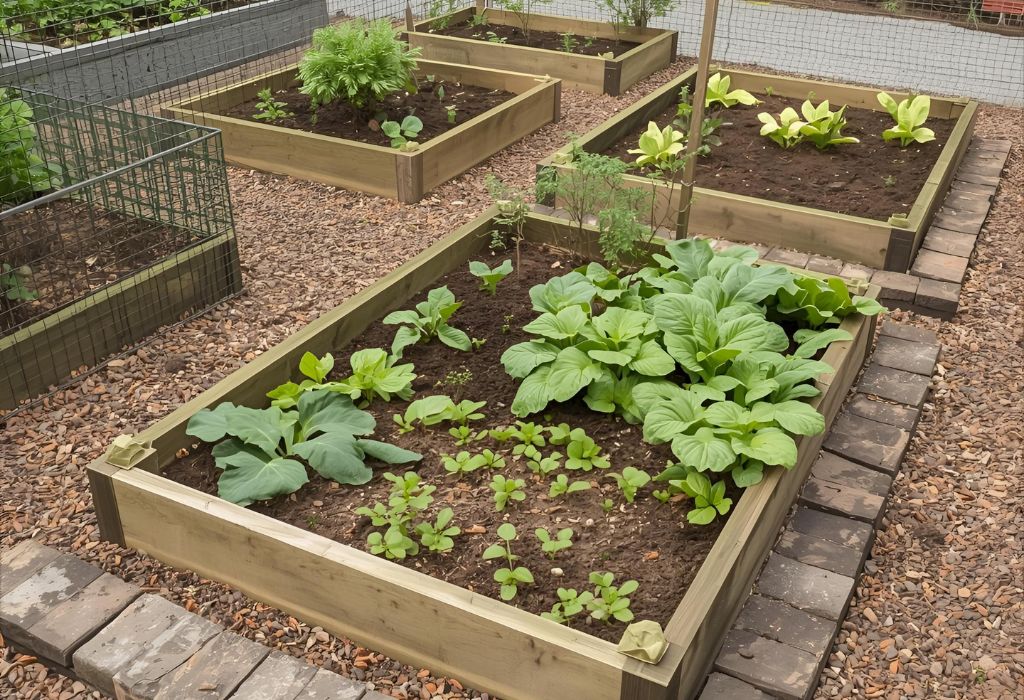
For permanent vegetable beds, organic mulch outperforms fabric. Materials such as straw, wood chips, shredded leaves, or compost suppress weeds while feeding the soil.
A Michigan State University trial showed mulch reduced weeding labor by 66% and kept soil cooler by up to 13°F source. Unlike fabric, mulch breaks down into organic matter, enriching soil life and improving structure.
Mulch also moderates soil moisture. It reduces evaporation, protects from erosion, and provides habitat for beneficial organisms. Unlike plastic or fabric, it integrates naturally into the ecosystem.
Living mulches are another option. Low-growing cover crops such as clover or rye protect soil while competing with weeds. When managed carefully, they reduce erosion and contribute nitrogen and biomass.
Even cardboard layers beneath mulch can work in specific cases. They smother weeds while breaking down within a season, leaving no synthetic residue behind.
These organic methods combine weed control with soil improvement, creating systems that grow stronger over time.
Installation Guide If You Still Choose Fabric
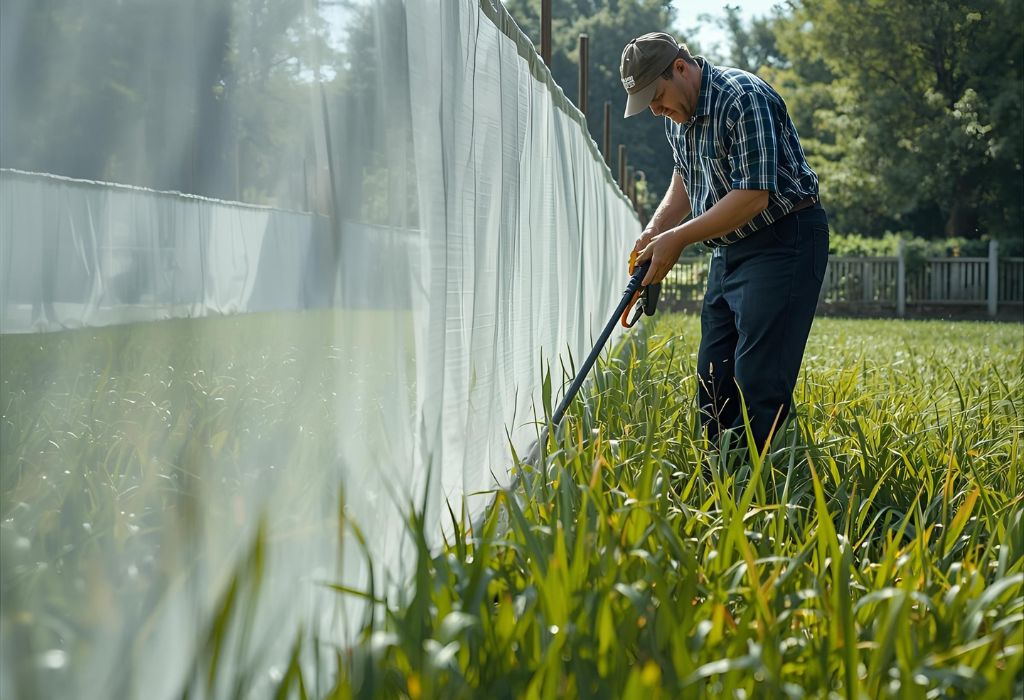
If a gardener insists on using fabric, installation must be done carefully to minimize problems. Only UV-stabilized, permeable material should be chosen.
Fabric should be stretched tightly, with overlaps of at least 6 inches to block gaps. Staples or pins secure the edges to prevent wind from lifting corners.
Holes should be burned or cut cleanly to reduce fraying. Crops with wide spacing adapt better, as fewer holes reduce the chance of weeds sneaking through.
Drip irrigation beneath the fabric ensures plants receive enough moisture. Without it, water infiltration through clogged pores may fail to meet root demands.
At the end of the season, fabric should be removed immediately. Rolling, labeling, and storing it in a dry, rodent-free area allows reuse without leaving barriers in place all winter.
This disciplined approach turns fabric into a temporary tool rather than a permanent obstacle.
Seasonal Plan Without Fabric
An alternative seasonal strategy uses no synthetic barriers at all. In spring, gardeners can prepare a stale seedbed by encouraging weeds to germinate and then cultivating them shallowly before planting.
Once crops are established, a 2–4 inch layer of mulch is applied. This suppresses weeds, regulates soil temperature, and feeds the soil as it decomposes.
During summer, topping up mulch ensures ongoing weed control and moisture conservation. Deep, infrequent watering encourages strong root systems and reduces stress.
In fall, shredded leaves or compost are added to protect soil and replenish organic matter. Over time, this builds fertility while steadily lowering weed pressure.
This natural cycle avoids the maintenance headaches of fabric while supporting resilient, high-yielding gardens.
Garden Fabric vs. Lawn and Path Use
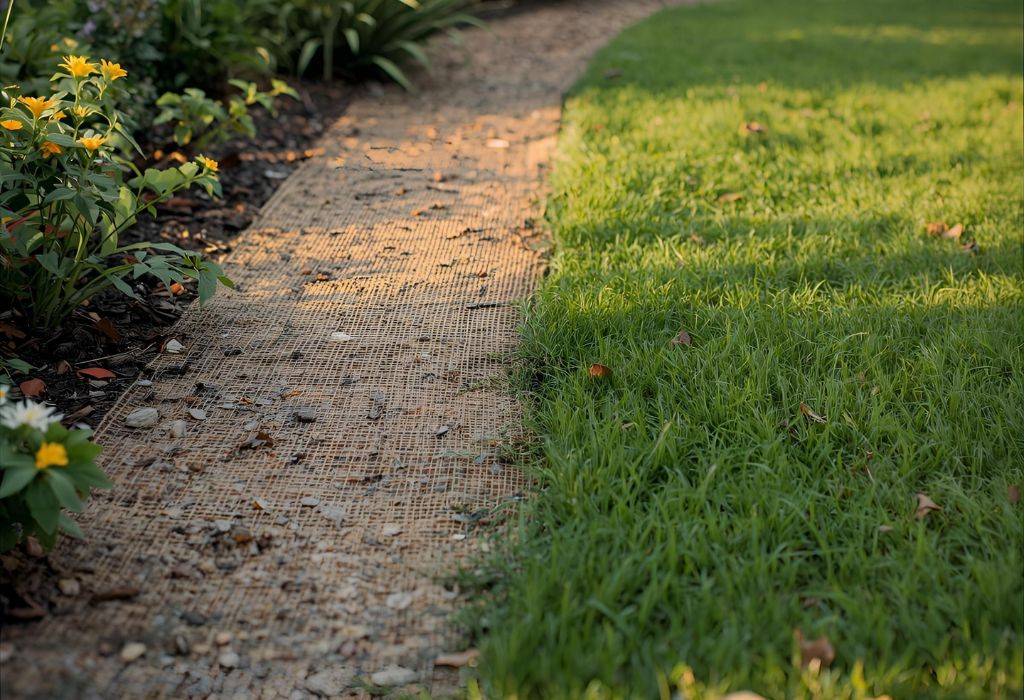
It is important to separate vegetable beds from other areas of the property. While fabric is problematic in food-producing beds, it can be practical in non-planting zones.
Under gravel paths or ornamental borders, fabric blocks weeds effectively without harming soil where crops are grown. Combined with mulch or stone, it creates tidy, low-maintenance walkways.
This dual role explains why fabric remains popular. In some places it is helpful, while in others it creates more harm than good. Recognizing these distinctions ensures the right tool is used in the right place.
Conclusion
So, can i use weed control fabric in vegetable garden beds safely? The answer depends on how and where it is used.
For short-term control in wide-spaced crops or temporary paths, fabric can be effective if installed and removed correctly. But for long-term vegetable beds, the disadvantages outweigh the benefits.
Organic mulches, compost, and living covers suppress weeds while enriching soil. They feed microbes, support earthworms, and improve structure season after season.
By focusing on natural, soil-building solutions, gardeners save labor and increase yields without compromising fertility. Weed control fabric may offer quick results, but sustainable alternatives ensure healthier gardens for years to come.
I’m Maya L. Greenwood, a lifelong plant lover who believes anyone can grow something beautiful with the right guidance. After years of testing soil mixes, pruning methods, irrigation tricks, and pest-safe solutions, I started EasyGardenTips.com to turn hard-won lessons into step-by-step advice. From seed starting and container gardens to composting and seasonal checklists, my goal is to make gardening simple, sustainable, and fun.
